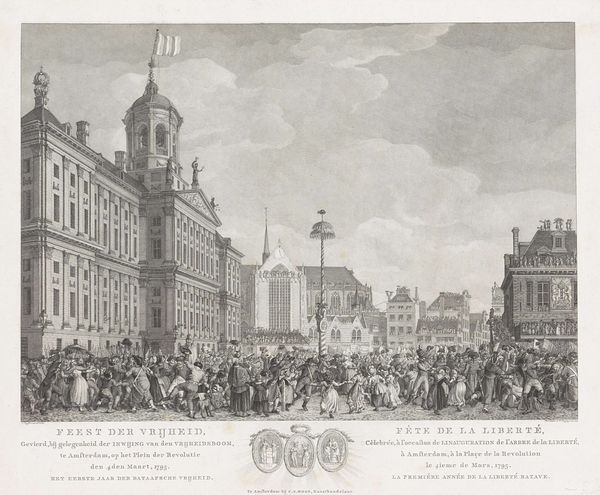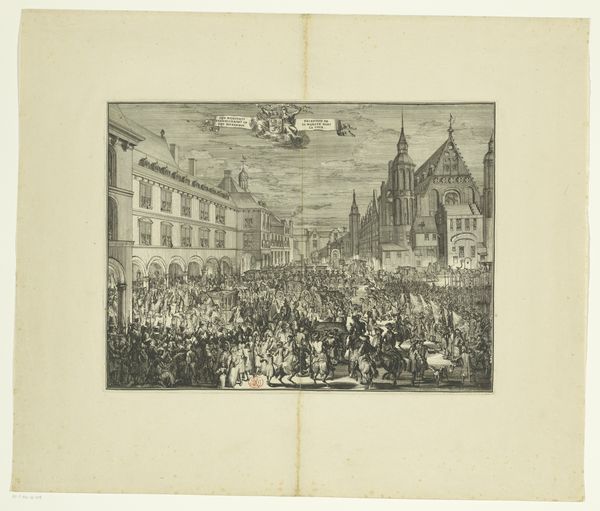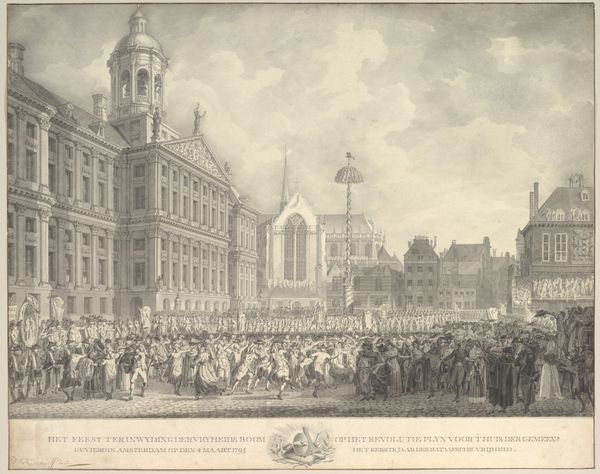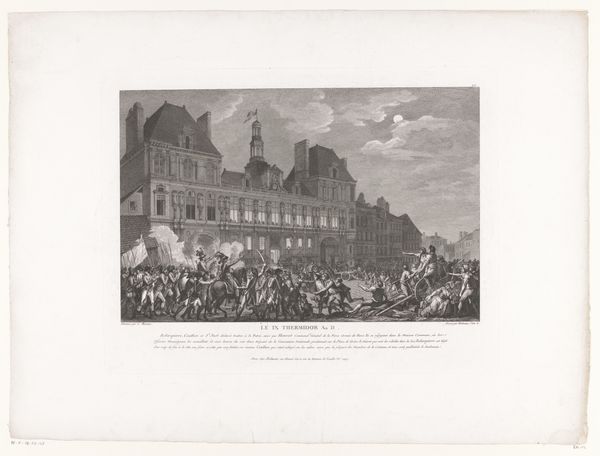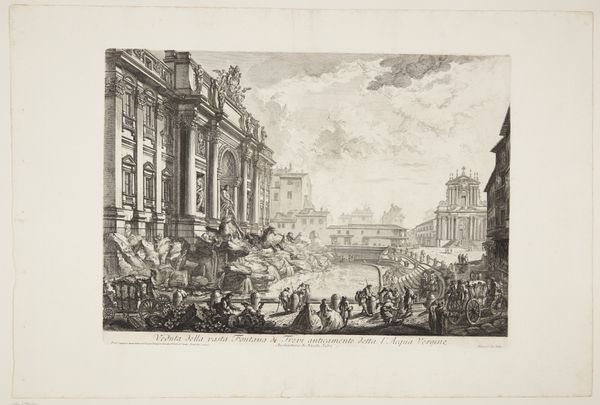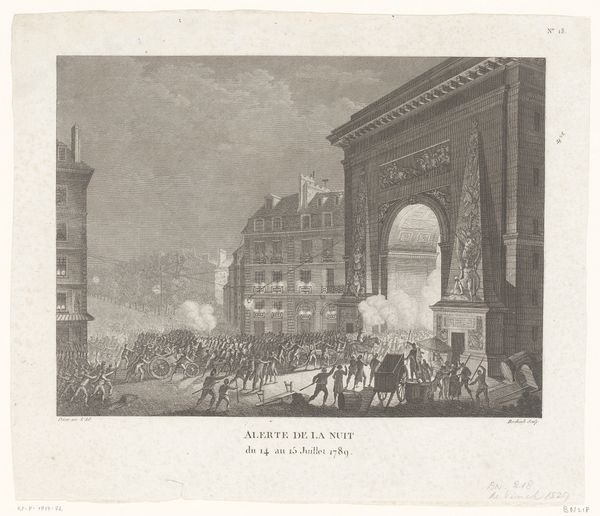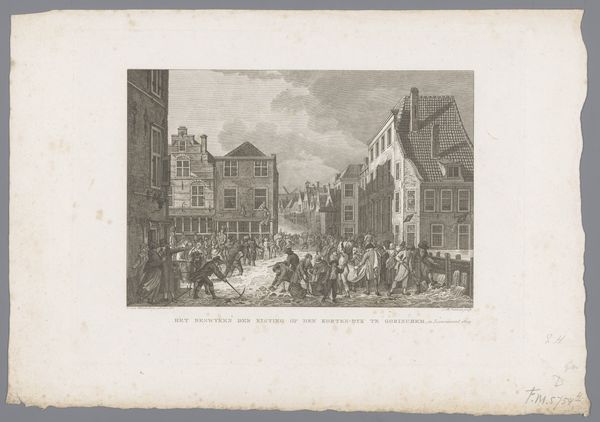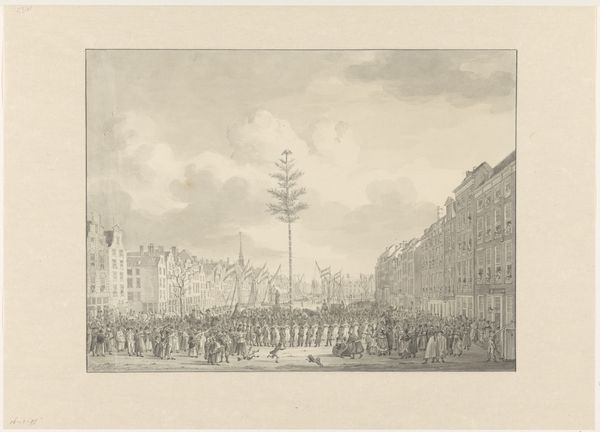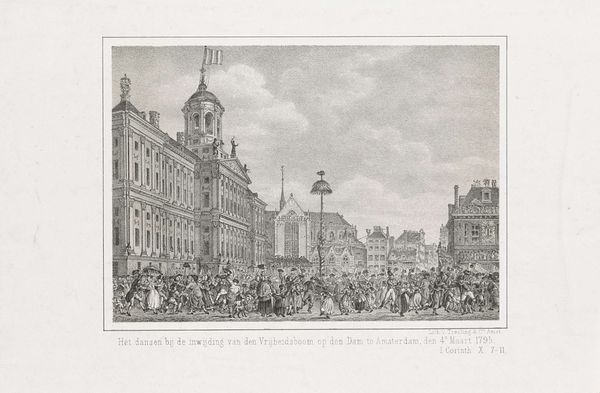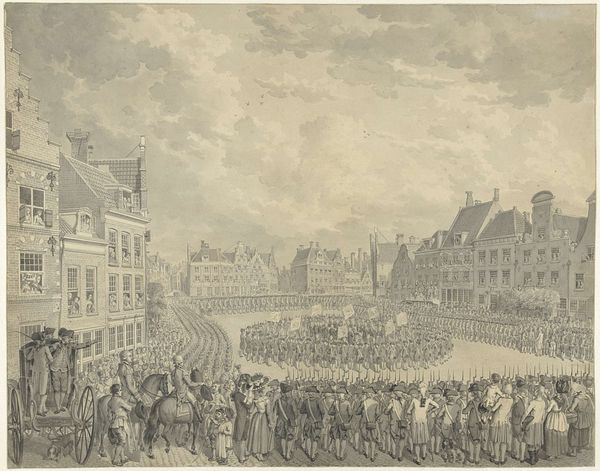
print, engraving
#
neoclacissism
# print
#
old engraving style
#
cityscape
#
history-painting
#
engraving
Dimensions: height 418 mm, width 505 mm
Copyright: Rijks Museum: Open Domain
Curator: This print by Reinier Vinkeles, created in 1796, commemorates the Alliantiefeest, or Alliance Festival, which took place on Dam Square in Amsterdam the previous year. It marks the alliance between the Batavian Republic and France. Editor: My first impression is of organized chaos! It's a dense cityscape filled with people, and even though it’s rendered in a detailed, almost clinical style, there’s a feeling of exuberance, of celebration pushing against the formality of the architecture. Curator: Absolutely. The scene depicts a carefully orchestrated public spectacle designed to legitimize the new political order. The architecture looms imposingly. Editor: Precisely. You've got the central maypole, heavily laden with symbols of liberty and Franco-Batavian unity – things that maypoles usually embody. Consider those emblems—the Phrygian cap atop a spear. It all communicates a specific message, attempting to create visual connections with similar uprisings of liberty, and does it within a pre-established framework that viewers immediately understood. Curator: And it’s important to remember that public festivals like this were vital tools for the Batavian Republic. The authorities understood the power of spectacle to shape public opinion and create a sense of national identity rooted in these revolutionary principles. The scale is very compelling in showing its effect on the architecture and spectators that line the streets. Editor: True. But I think we can’t overlook how that spectacle draws upon an established visual vocabulary. Alliances, peace, liberty–these are timeless concepts, and imagery draws heavily on familiar and established tropes to reach its audience more efficently. Even something as seemingly specific as the robes, borrowed and appropriated through various movements over time, become encoded to project these concepts into a specific meaning and event. Curator: This print served as a form of propaganda, disseminating that image of unity and progress throughout the republic. The meticulous detail and Neoclassical style lent it an air of authority. The placement of symbols, not just flags, become evidence. Editor: This image is evidence of how carefully visual traditions are maintained. The way figures arrange themselves, and flags and maypoles serve as landmarks helps connect the people with their identity, both in a contemporary and temporal sense. Curator: A vital record of a pivotal moment. It lets us explore the visual language of revolution. Editor: An event meticulously captured so it remains vivid and relevant over generations.
Comments
No comments
Be the first to comment and join the conversation on the ultimate creative platform.
